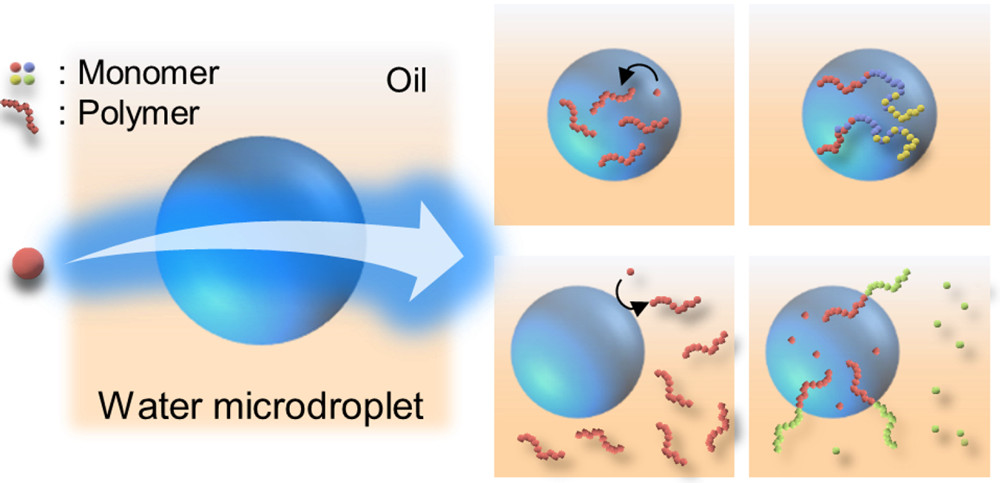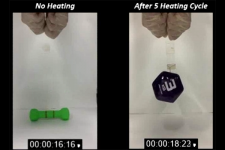“Microdroplet-Mediated Radical Polymerization” by Kyoungmun Lee, Hyun-Ro Lee, Young Hun Kim, Jaemin Park, Suchan Cho, Sheng Li, Myungeun Seo, and Siyoung Q. Choi was published in ACS Central Science. The Choi group in the department of chemical and biomolecular engineering at KAIST led the work. Suchan contributed to the polymer characterization produced in this study.
Microdroplet chemistry is recently attracting interest because reactions can be pretty different when they take place in tiny immiscible liquid drops rather than homogeneous solutions. One exciting feature is that the electric field at the microdroplet interface can be substantial because the dielectric constants of the dispersed and continuous media can be quite different. It can go up to 10^7 V/cm at the water/organic liquid interface – which is strong enough to create hydroxyl radicals in a noticeable amount because of the large specific surface area of the microdroplets.
The Choi group demonstrated that when they prepared aqueous droplets containing water-soluble vinyl monomers in a hydrocarbon liquid by sonication, the hydroxyl radicals spontaneously polymerized the monomers to produce high molar mass species via the radical polymerization mechanism. This is the first observation using the chemical species generated at the microdroplet interface for polymer synthesis. When a chain transfer agent is also present in the system, reversible addition-fragmentation chain transfer (RAFT) polymerization seemed to occur in a controlled fashion. The authors showed that the polymerization could be turned on and off by sonication (i.e., by creating the droplets and coagulating them), and the hydrophobic monomers dissolved in the continuous phase can also be polymerized. They further demonstrated multiblock copolymer synthesis by sequential monomer addition. As the polymerization does not require any additional radical initiators and can take place in the confined aqueous space, this may shed some insight on cellular biochemistry and possible reaction mechanisms in the prebiotic era.
The full article is available at the following link: https://pubs.acs.org/doi/10.1021/acscentsci.2c00694


